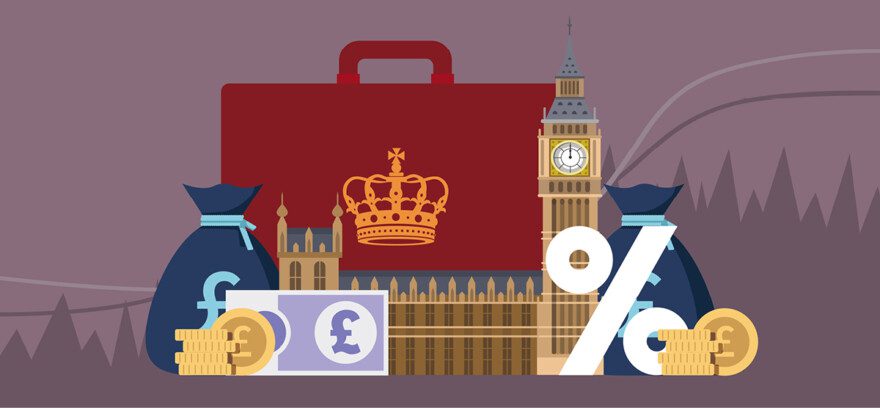UK markets were relatively unchanged this week, with the FTSE 100 Index falling by 0.06% to trade at 7,675 points at the time of writing.
Chancellor Jeremy Hunt presented the UK budget this week, as the conservative government tries to reduce its deficit in the polls ahead of the general election. The budget, which was announced on Wednesday, included a 2p cut in the main rate of national insurance contributions paid by workers, that will be partly offset by the abolition of the non-dom tax regime and other tax increases.
Other notable announcements included increasing the income threshold at which child benefit is tapered from £50,000 to £60,000; the introduction of a British ISA, which will allow an additional £5,000 for individual savings accounts that can be invested in UK equities in addition to the existing £20,000 per person annual ISA allowance; new or increased taxes on vapes from 2026; and tax rises on tobacco and non-economy class flights.
Tax breaks for owners of holiday lettings will be scrapped and the windfall levy on oil and gas producers will be extended by one year to 2029. Personal tax thresholds were left frozen, which will put many Britons into higher tax brackets.
On the economic front, The Office for Budget Responsibility has forecast the economy will expand by 0.8% in 2024, largely unchanged from 0.7% expected in November. It upgraded the forecast for 2025 to 1.9% from the 1.4% expected in November and to 2.2% in 2026, from the 2% previously forecast, reflecting higher population growth. Inflation is expected to slow below the Bank of England’s 2% target in a few months, Jeremy Hunt said.
Across 2024, inflation is set to average 2.2%, down from 3.6% previously forecast, and is expected to fall to 1.5% in 2025. The 2022-23 fiscal year saw the largest year-on-year drop in living standards since The Office for National Statistics began in the 1950’s but real household disposable income per person is expected to recover to its pre-pandemic peak by 2025-26, two years earlier than previously forecast.
Elsewhere,UK businesses reported easing wage growth expectations in February, with wages forecast to rise by 4.9% on average over the next 12 months, down from an anticipated 5.1% increase in January according to The Bank of England’s monthly survey of chief financial officers. This was the first time since May 2022 that the figure has dropped below 5%.
Commodity markets
In the commodity markets, Brent crude futures traded around $83 per barrel on Friday, and are set for a weekly rise, driven by growing demand in the United States and China, the world’s biggest oil consumers. Data released by the Energy Information Administration showed that US gasoline inventories fell by 4.5 million barrels last week, and distillate stockpiles were down by 4.1 million barrels.
Both fell more than expected in a sign of strong demand. In China, imports of crude oil rose 5.1% in the first two months of 2024 from a year earlier, and India’s fuel consumption increased 5.7% year on year in February, amid strong factory activity in the world’s third-biggest oil importer and consumer. After accounting for the extra day in February this year, oil imports in China were up by 3.3% in annual terms, with expectations of a demand increase for the year.
Gold traded around $2,170 an ounce on Friday, surging to a record high this week, driven by growing expectations of US interest rate cuts, investors hunting for safe haven assets and months of prodigious buying by central banks and Chinese investors.
Equity markets
US equity futures were little changed on Friday, as investors look towards the highly anticipated monthly jobs report. In Thursday’s regular session, the Dow Jones Industrial Average rose 0.34%, the S&P 500 advanced 1.03%, while the Nasdaq Composite soared 1.51%. Analysts have upgraded their forecasts for the US economy this year, bolstering hopes of a soft landing.
Strong growth in the final quarter of 2023, and the continued resilience of the US labour market in January, have resulted in economists polled by Bloomberg now expecting US GDP to expand by 2% this year, about twice the pace they expected at the end of 2023. Most analysts are now forecasting that the Federal Reserve will make its first rate cut this year in either June or July, with three or four quarter-point moves in total by the end of the year.
Federal Reserve chair, Jerome Powell announced this week that rate reductions will “likely be appropriate” later this year “if the economy evolves broadly as expected” and once officials gain more confidence in inflation’s steady decline. However, some economists cautioned that the booming US economy may result in the US central bank holding off any rate cuts until the end of the year, especially if markets themselves do some of the job of easing capital costs by pushing down bond yields. The number of Americans filing new claims for unemployment benefits was unchanged last week, as the labour market continued to gradually ease, according to the latest data from the US Labor Department.
The information provided in this communication is not advice or a personal recommendation, and you should not make any investment decisions on the basis of it. If you are unsure of whether an investment is right for you, please seek advice. If you choose to invest, your capital may be at risk and the value of an investment may fall as well as rise in value, so you could get back less than you originally invested.
